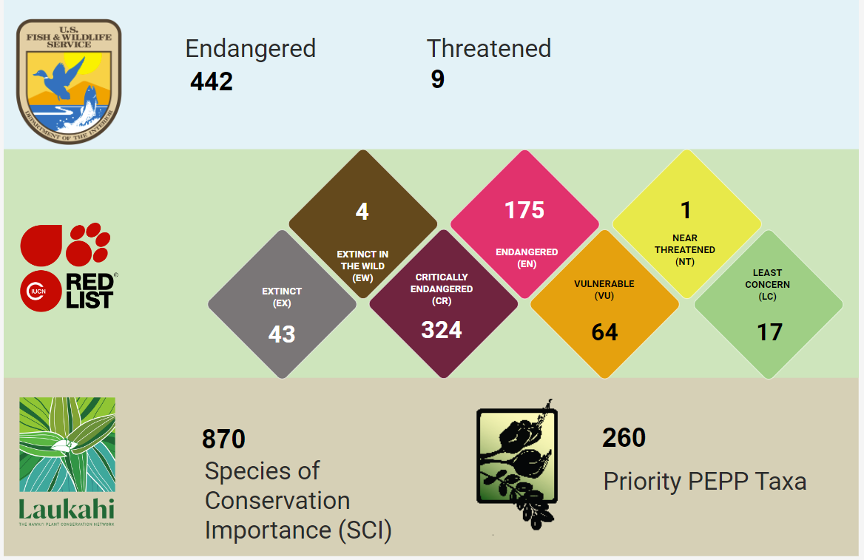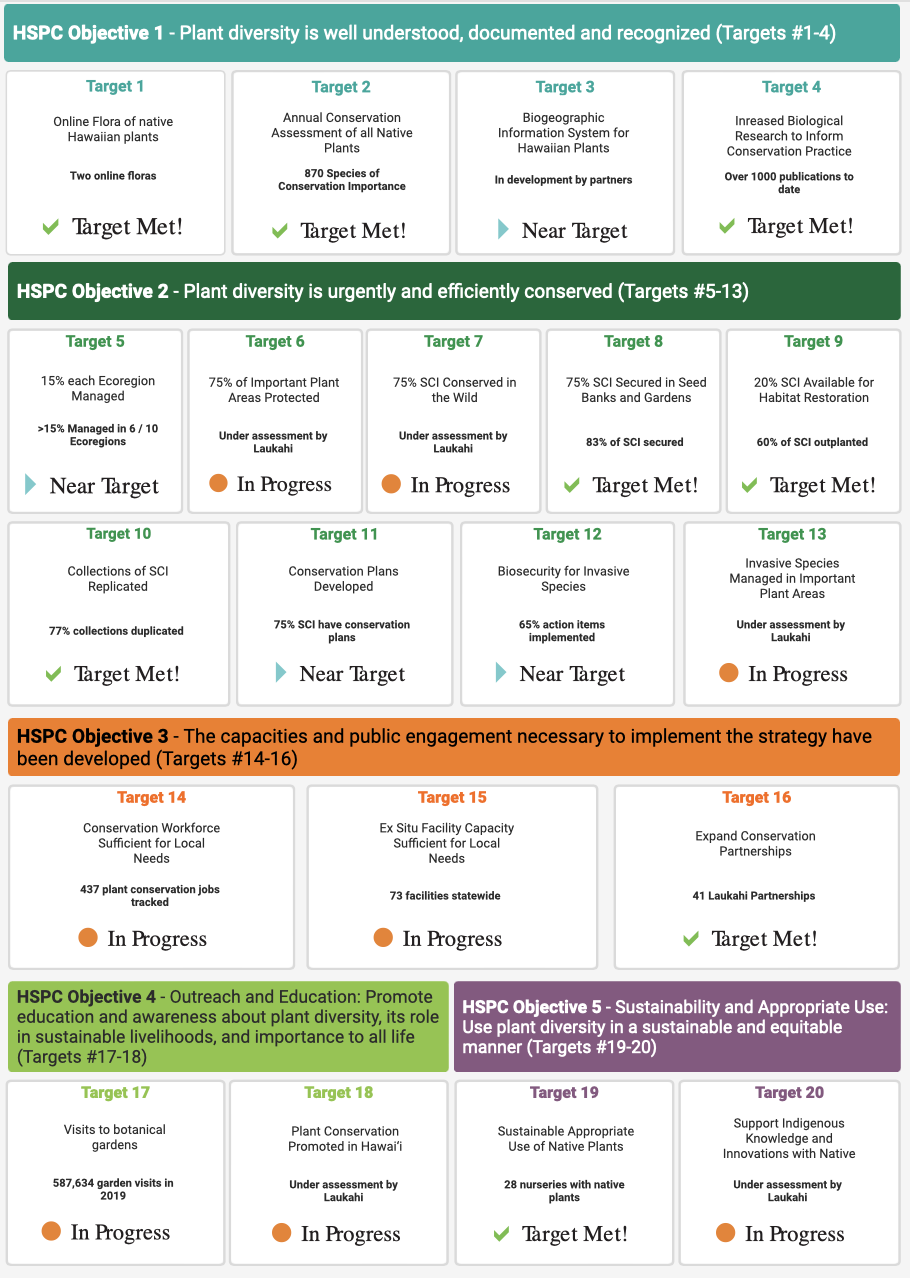Aloha ʻĀina: Conserving Hawai'i's Native Flora
Plant conservation is essential in Hawai‘i to preserve its unique flora, which has a critical role in maintaining native ecosystem health and sustaining life. The Hawaiian flora has one of the highest rates of endemism in the world (90% for angiosperms, 74% for ferns and lycophytes). Approximately 10% of the flora is extinct, and over 30% (of 1,390 species) are federally listed as threatened or endangered. It is estimated that 72% of the vascular flora is threatened with extinction, making it one of the world’s most threatened. Increased and novel conservation measures are urgently needed to save what remains.
The conservation of Hawai‘i’s flora is challenging. Reasons for the decline of native species are numerous, often centered around the introduction of ~6,000 non-native species, including plants (e.g., Miconia calvescens), invertebrates (e.g., slugs and snails), rodents (e.g., rats) and ungulates (e.g., wild boars). New introductions of invasive species, such as the Coconut Rhinoceros Beetle which threatens Pritchardia palms, continue to assault native ecosystems. Populations of many plants (e.g., Schiedea spp.) are small and fragmented, facing threats such as dwindling genetic variation and reduced outcrossing as pollinator populations decline or disappear. Looming threats like climate change and wildfire pose increasing risks. Climate models predict that 5% of the flora of Hawai’i will have no remaining habitat by 2100.

The rapid decline of native plants made clear that an overarching, coordinated, conservation strategy was needed. Laukahi, The Hawai‘i Plant Conservation Network, formed in 2016 as a non-profit organization that coordinates a voluntary alliance of agencies, non-profits, community groups, organizations, and individuals dedicated to protecting native Hawaiian plants. Laukahi emerged after a statewide capacity assessment, resulting in the Hawai‘i Strategy for Plant Conservation (Strategy). The Strategy defines 20 targets that align with 5 major global conservation goals: understanding plant diversity, conserving plant diversity, building capacity to implement strategy, outreach and education, and sustainability. Laukahi tracks 870 Species of Conservation Importance (SCI), including rare and other ecologically and culturally important species.
Driven by a full-time coordinator and contributions from 42 partners, Laukahi has made significant progress on the Strategy since 2016. We first focused on the urgent need to coordinate and expand ex situ conservation—securing SCI in protected collections before they were gone from the wild. The coordinated efforts of Laukahi and the network accelerated the growth of ex situ collections significantly. Together, we developed best practices for working with rare plants and published the data and our progress as a dashboard on our website. From 2012 to 2020, SCI secured in ex situ collections grew from 73% to 83%—exceeding the 75% global target. We continually update species collection needs for each island, ensuring the availability of rare and ecologically important plants for future ecosystem restoration activities.
In the last year, we launched our first in situ assessment of native plants. This is necessary to understand plant distributions and habitats in the wild and to determine if protection and management are adequate for their long-term survival. Thanks to our network partners, we have gathered the data required for the assessment. Once our analysis is completed, Laukahi will communicate the results to conservation programs state-wide, to inform and guide actions prescribed in the Strategy.
With each assessment and gap analysis we complete, we adjust our needs. The assessments document the status conservation activities and identify steps that should be taken by the network to meet goals. This informs our future activities, such as seeking a missing dataset on control of invasive rodents in our in situ assessment or including valuable sources of plant materials like fern spores in our ex situ assessment. Recently, we completed 112 IUCN Red List assessments of Hawaiʻi’s 328 native trees, identifying new SCI to incorporate into the Strategy’s targets. We remain flexible to respond to evolving needs, such as the recent wildfire disasters. As the broader community responds, Laukahi’s master inventory of all native plant materials stored in seed banks and gardens will enable us to inform initiatives to restore native forests in areas currently dominated by fire-prone invasive grasses.
To support building public engagement, Laukahi started a new project focused on biocultural connections called Nā Inoa Meaulu, which translates to the Hawaiian Plant Names. Hawaiian names of plants are applied inconsistently today because authoritative summaries of names are scarce or incomplete. This project will combine references on Hawaiian names of native plants into a single resource to be shared with botanical gardens to support their many outreach activities, and it will be made publicly available on our website for the use of other interested stakeholders, such as ‘ōlelo Hawaiʻi speakers and educators.

Our challenges are big, but our aloha ʻāina is much bigger! A simple translation of aloha ʻāina is a love of the land, but it extends as a much deeper concept and connection of land stewardship in Hawai‘i. The Network collaborated long before the formation of Laukahi formalized interactions. Partners say they “work for the plants,” focusing on serving the plants. The relationships in our network are strong, with reciprocation and collaboration forming natural aspects of our activities. With these efforts, people have demonstrated their aloha ʻāina. Though Hawaii has long been known as the world’s capital of endangered species, we want to be acknowledged one day as the world’s capital of biodiversity through our conservation efforts.
